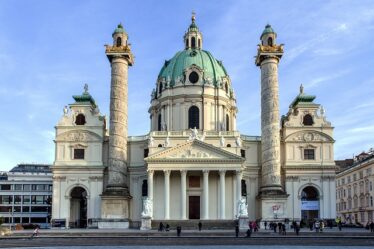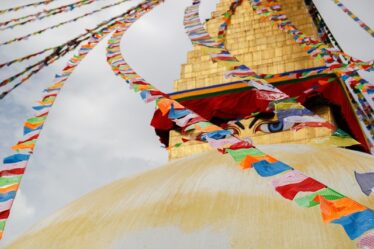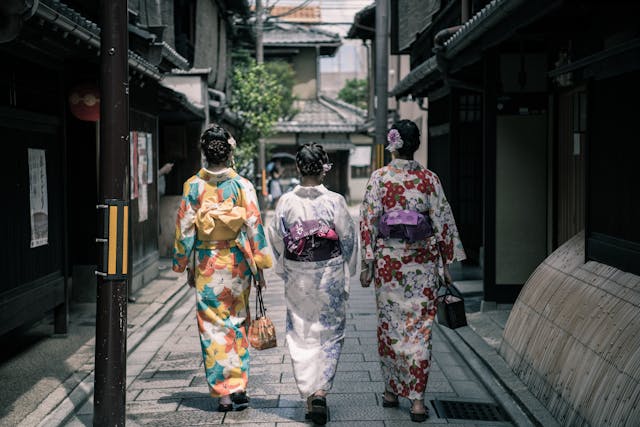
Kyoto is the soul of Japan, a place where the past meets the present in a unique blend of tradition and beauty. With more than 1,000 temples, authentic wooden alleys, imperial palaces and lush green landscapes, Kyoto is one of Japan’s top destinations.
Brief historical review
Kyoto was the imperial capital of Japan for more than 1,000 years, from 794 until 1868, when the capital was moved to Tokyo. During this time, the city became the country’s cultural and artistic center, preserving traditional Japanese architecture, arts, and rituals. Despite the devastation of World War II, Kyoto was spared from massive bombings, resulting in the preservation of many of its historical monuments.
How to get to Kyoto
We found ourselves in Kyoto during our trip in Japan, late November 2024. We stayed in the heart of Kyoto for 4 days, which, if you want our opinion, is essential to enjoy the heart of Japanese tradition!
So let’s see how you can get to the beautiful Kyoto of Japan. Kyoto does not have its own international airport, so you will get there via the airports in Osaka or Tokyo.
From Osaka: ITAMI OSAKA International Airport (ITM) is the closest major airport to Kyoto, approximately 47 km away. From there you have two basic options:
- By train, you will be at Kyoto Central Station in about 75 minutes. If you have a JR Pass, you can of course use it for this transfer.
- With the Itami Airport Limousine Bus, in about 90 minutes and a cost of 1,340JPY you will be directly in the center of Kyoto. The bus is a good option if you have heavy luggage and want a more relaxed journey, as it drops you directly in the center of Kyoto.
From Tokyo: By Shinkansen (bullet train), in about 2 hours 40 minutes (Hikari). You will again cover your journey with the JR Pass.
8 Top Attractions in Kyoto
#1 Fushimi Inari Taisha
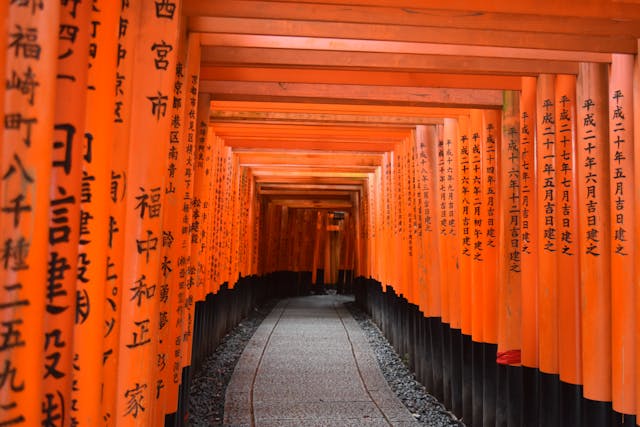
One of Kyoto’s most iconic landmarks, Fushimi Inari Taisha Shrine is known for the 10,000 orange Torii gates that decorate the path to the top of Mount Inari. The hike to the top offers stunning views of the city of Kyoto, so it’s worth visiting during the day. The climb (ascent and descent time approximately 2 – 3 hours) to the top of the trail offers a unique experience. The trail is full of beautiful landscapes, many small shrines and altars dedicated to Inari, the deity of agriculture, success and prosperity.
#2 Kinkaku-ji (The Golden Temple)
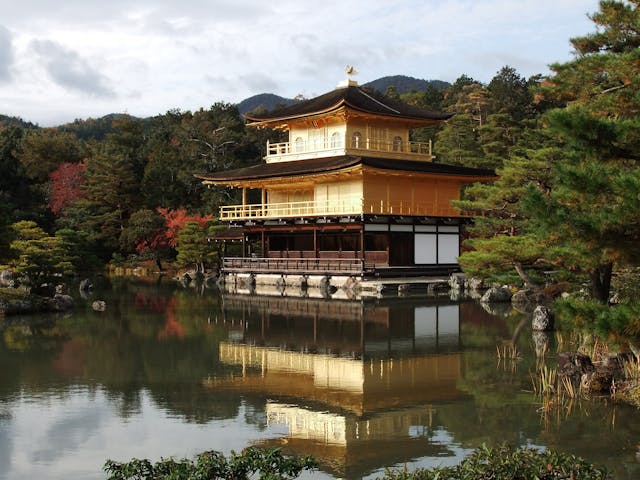
Kinkaku-ji Temple is one of Japan’s most famous landmarks. Built beside a tranquil lake, the temple offers a breathtaking backdrop throughout all seasons. The temple was built in 1397 by the military leader Shogun Ashikaga Yoshimitsu and originally served as his summer residence. After his death, it was converted into a Buddhist temple. The temple is mainly made of wood and is covered with gold leaf on its exterior, mainly on the 2nd and 3rd floors.
#3 Kiyomizu-dera
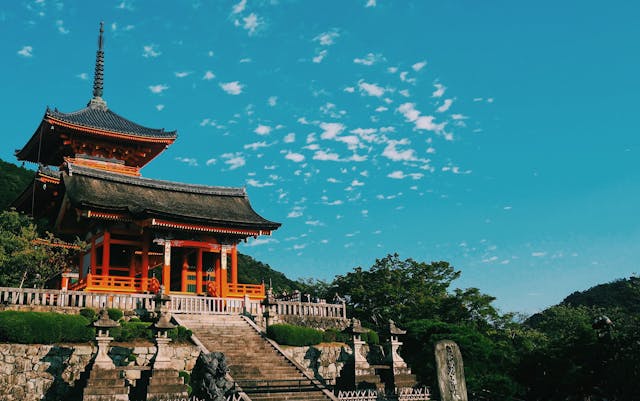
Kiyomizu-dera Temple, which means “Temple of Pure Water”, is one of the most famous landmarks in the city. The path leading to this temple is the most picturesque path you will walk in Kyoto. You will feel like you are in another era! Its wooden balcony offers stunning views of the city, especially during the cherry blossom season in spring and the red leaves in autumn.
4 Gion – The Traditional Geisha District
Gion is Kyoto’s most famous traditional district, known for its geishas (known as geiko in Kyoto) and their apprentices, the maiko. Its narrow, cobblestone streets, such as Hanamikoji-dori, are lined with traditional wooden houses (machiya), luxurious kaiseki restaurants and teahouses (ochaya) where geishas entertain distinguished guests with music, dance and games.
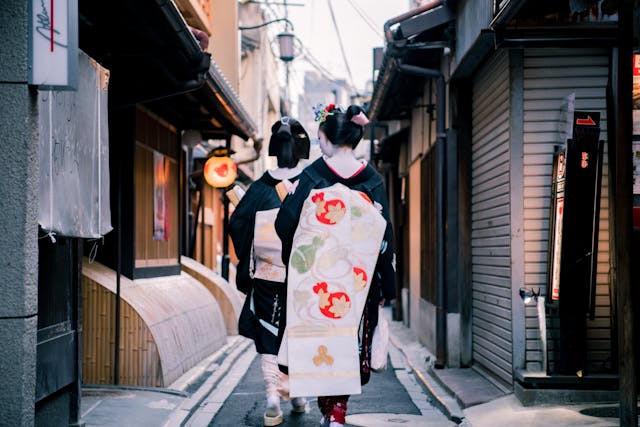
Dusk is the best time to walk through Gion, as you can see geishas moving discreetly towards their meetings. For an authentic experience, visit Gion Corner, which hosts cultural performances including maiko dancing, tea ceremonies and shows such as Kyogen theater.
#5 Yasaka Shrine
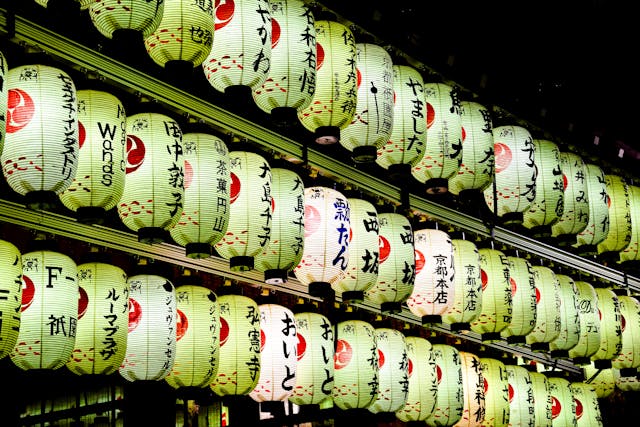
Yasaka Shrine is located in the famous Gion district. It is dedicated to the deity Sunanoo-no-Mikoto, the god of storm and the sea in Japanese mythology. The Japanese consider him the protector of Kyoto. At night, the traditional lanterns create a magical atmosphere, while the neighboring district full of traditional houses and shops adds to the charm of the place.
#6 Bamboo Forest (Arashiyama)
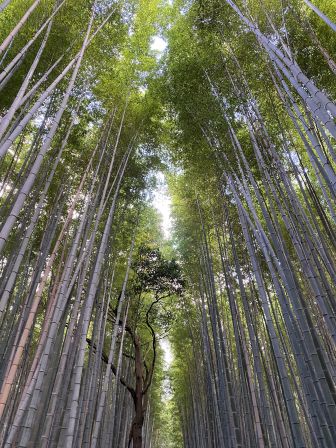
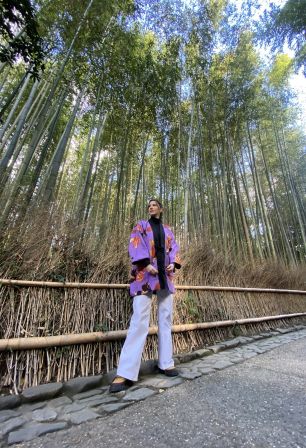
In about 1 hour by city bus you will find yourself in the most famous forest in Kyoto. The earlier you arrive, the better to enjoy your walk. A walk through the bamboo forest in the Arashiyama area is a unique experience. The towering reeds create an eerie and peaceful landscape, ideal for photos and relaxation.
#7 Pontocho – Kyoto’s Traditional Nightlife
Pontocho is one of Kyoto’s most charming streets, full of small traditional restaurants and bars. Pop into a traditional restaurant and be sure to order okonomiyaki, a traditional Japanese omelet.
#8 Nishiki Market
If you want to try authentic Kyoto cuisine, Nishiki Market is the place to be. Here you’ll find local delicacies like yuba (tofu), grilled skewers, wagashi sweets, and the famous matcha (green tea).
How to get around Kyoto
Kyoto has an excellent transportation network:
- By bus: It is the most practical means of transportation, as most attractions are accessible by urban lines.
- By bike: Kyoto is one of the most bike-friendly cities in Japan, and renting a bike is a great way to explore the city.
- By train and metro: Local lines and the metro serve basic routes, but do not cover all tourist areas.
- On foot: The central districts, such as Gion and Pontocho, are ideal for walking.
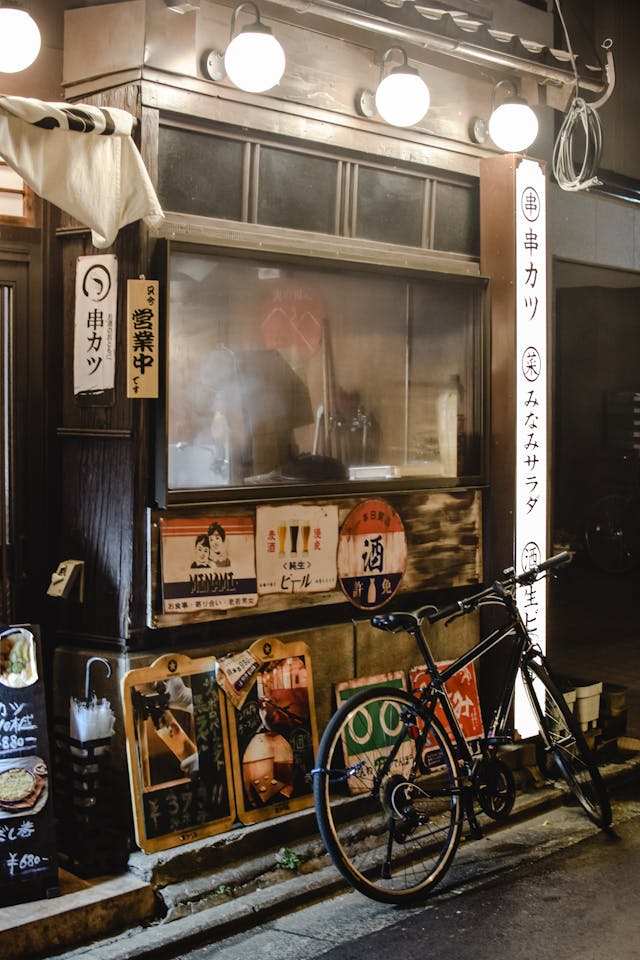
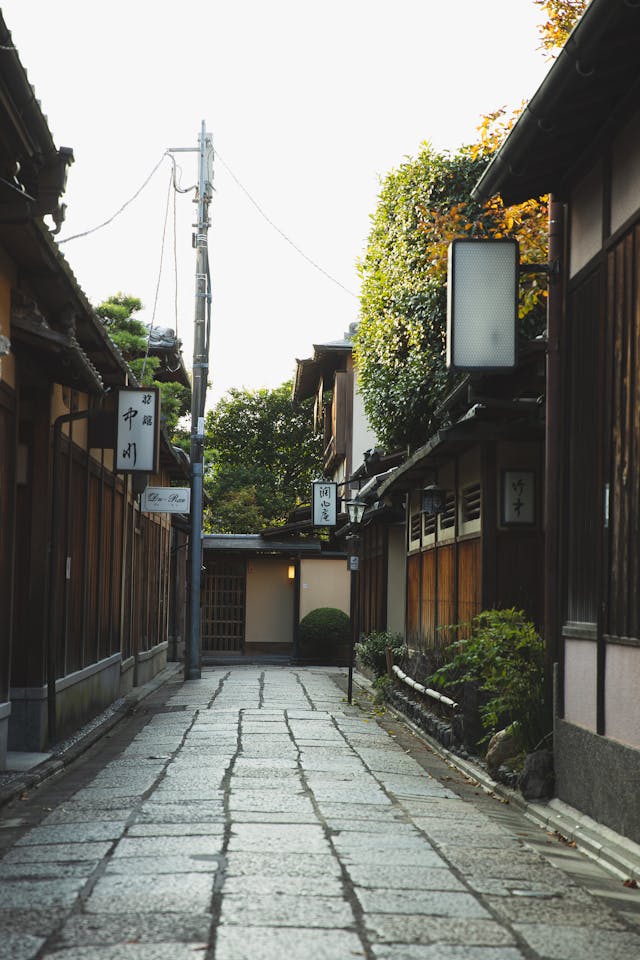
Where to stay in Kyoto
First of all, let’s emphasize that from a personal point of view, Kyoto is worth at least 3-4 nights. It will win you over immediately and really no matter how long you stay, you will feel like it is not enough. Kyoto therefore offers accommodation options for every budget:
- For an authentic Japanese experience, you can stay in a traditional ryokan.
- If you prefer something more modern, the Hotel Granvia Kyoto, The Thousand Kyoto or the Hotel 29 Kyoto are excellent choices.
- For more affordable options, you can find excellent hostels, such as the Piece Hostel Kyoto and the K’s House Kyoto, which are popular choices among travelers.
Νote: Throughout Kyoto, you will encounter mainly female travelers who rent geisha costumes for 25 euros and even more, to have their photos taken in the most famous places! If you want to live this experience, you will find boutiques everywhere in Kyoto that rent the entire costume for a few hours, to both women and men.
Geishas & Kimonos
A geisha’s kimono was extremely important, as it was a sign of their social status, professionalism, and aesthetic. Kimonos were made of expensive materials, such as silk, and were often decorated with elaborate embroidery or dyeing. The colors, patterns, and the way the sash (obi) was tied indicated age, experience, and occasion. Apprentices (maiko) wore more striking kimonos, while experienced geishas (geiko) preferred more subtle and elegant designs.
Asset value: Kimonos were very expensive and were often considered an investment. A geisha could have a large collection, which constituted a significant part of her wealth. Thus, the kimono was not just a piece of clothing, but a tool of work, a symbol of status, and often an asset.
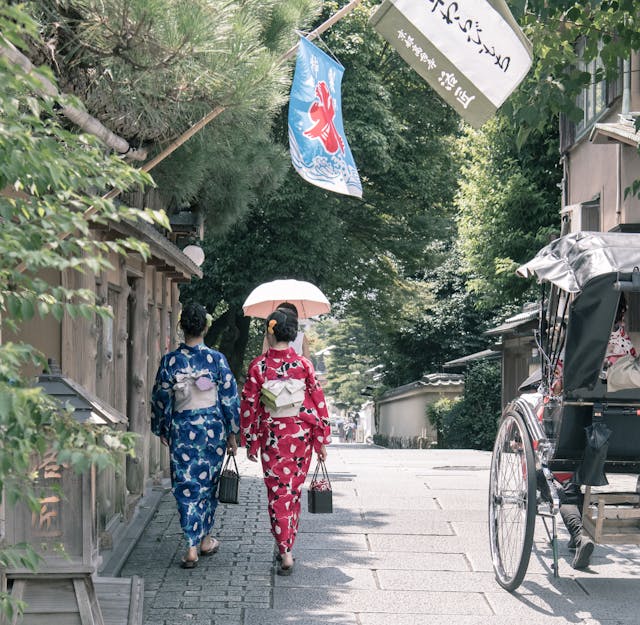
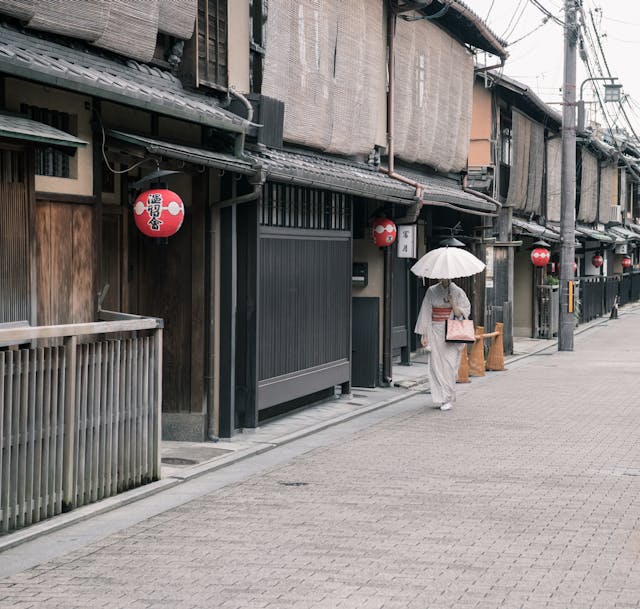
Εxtra tip: Don’t leave Kyoto without buying a second-hand silk kimono (from 30 euros in perfect condition) from the wardrobe of an authentic geisha. You will find the right place with a great variety, both in designs and prices here. A secret that only those who read us will know!
Kyoto is a city that never ceases to enchant its visitors. From historic temples and traditional neighborhoods to rich cuisine and authentic cultural heritage, every corner of the city offers a unique experience. If you are planning a trip to Japan, Kyoto is a destination that should not be missing from your itinerary.
Read also: Tokyo: 4 days in Japan’s bustling metropolis
See more about Kyoto, Japan in the highlight stories #KYOTO on Ιnstagram

